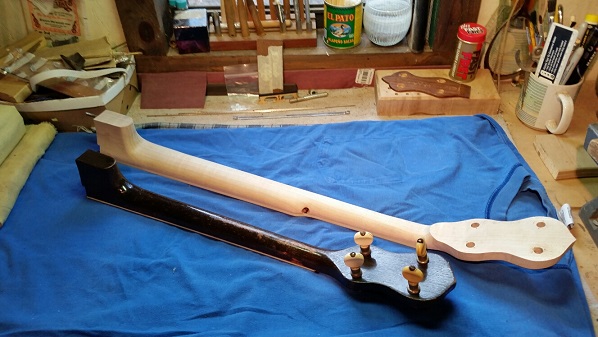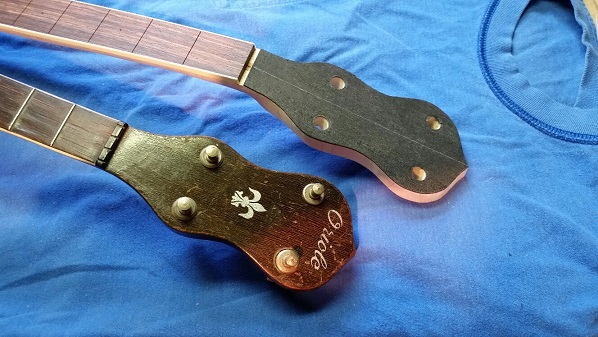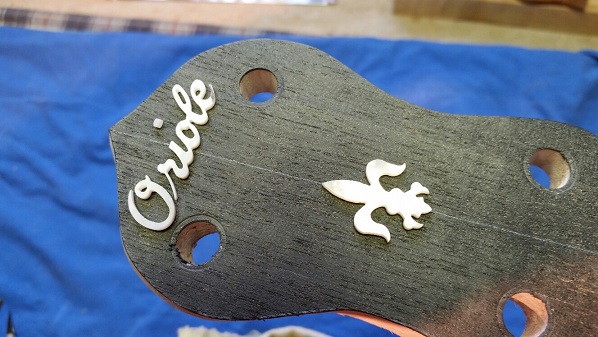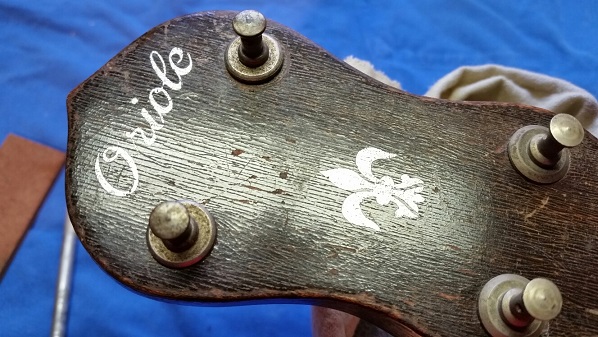Some of you that have read my rambling posts know I spend a fair amount of my free time in a shop working on musical instruments, a hobby I picked up from my Dad thirty-some years ago. I put up this thread
http://club.alembicguitars.com/Images/449/210467.html?1435634821 one time about a few banjos we built together years ago. Occasionally we still collaborate on a project, though not as much in the past couple years. Busy? you know, life gets in the way. Anyway, opportunity recently presented my Dad with some time to work in the shop again, and that being the case, it?s time for another shop thread. The Project: an ?Oriole? tenor banjo, made by Gibson in 1926. Like many other makers of the day, Gibson made musical instruments for sale through places other than their dealers, and simple re-branded them under various names? ?Kalamazoo?, ?Cromwell?, ?Tru-Jo?, ?Kel-Kroydon?, and ?Recording King? to name a few more. ?Oriole?, as I understand it, was a Montgomery-Ward catalogue brand. This particular model was essentially a re-badged TB-0, their basic tenor banjo offering, fairly plain, though still very good quality. Not many folks play tenor banjo anymore, but around the mountains of Southwest Virginia, if you shake any good-size tree, a half-dozen banjo players will tumble out? at least two of them will be very good players. The others? well, it?s best if you move them along before the neighbors notice, or worse, more banjo players suddenly get the idea it?s cool if they hang out at your place. Call the cops if you must, or just lure them offsite with a sausage biscuit or cheap beer. The sticking point here, there?s literally no difference between the pot assembly (the round, drum-like part) of a tenor banjo and a regular, long-scale five string banjo, but the necks as you can see are radically different. This project is a typical conversion, from four-string short scale to five-string long scale. Thousands of these been done on Gibson tenor banjos - so many in fact, it?s actually pretty hard to find a pre-WWII Gibson banjo with the original tenor neck. This project is a little weird, because this model was so plain that most would overlook it in search of the fancier higher-end models from the same era to convert. Starting with the neck: Here?s the original neck, and the roughed out new one. They are the same basic construction, with maple, and a rosewood fretboard. We?ve already installed a two-way truss rod, although we put it in backwards so the access is in the heel instead of the headstock. The original had no neck reinforcement by the way, though it probably didn?t need any, as tenor banjo strings are very light gauge. We?ve also glued the ebony headstock veneer on before sawing out the shape to a template made from the old headstock, and drilled the holes where the tuning pegs will go. (sorry, no pictures? hey, it?s just a few minutes with a bandsaw and drill press. I?m basically just trying not to cut off any bass-playing fingers or end up with some extra holes)

In keeping with the minimalist element, Gibson used a very plain headstock pattern on these models. Notice how the inlay on the old tenor neck?s headstock isn?t even inlaid pearl, but instead is stenciled or silk-screened in silver paint. Here they are from the same angle.

Using a high resolution digital picture, we were able to have the inlay machine-cut out of some .040 genuine mother-of-pearl. Here it is laying in position on the new headstock, and the old stenciled one for comparison.


Next up, the pot assembly ? most of which is already finished.